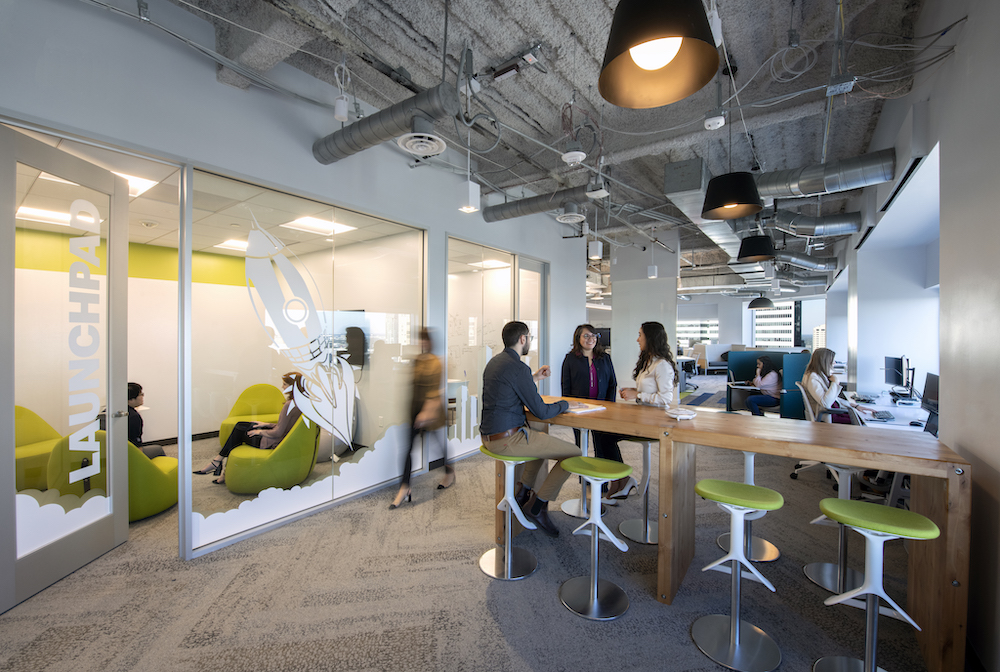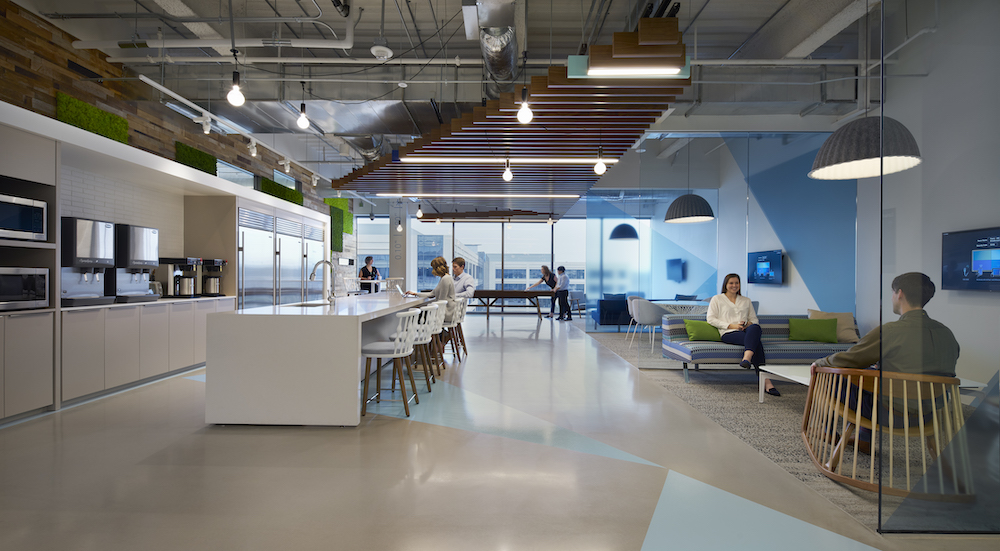PDR’s Larry Lander explores why old metrics may no longer serve as useful benchmarks as we return to work.

Data is essential – or so we’ve been told! There are a host of voices promoting the value of Big Data, and, indeed, we have increasingly sophisticated ways to gather it and harness the increasing volume, velocity, and variability of such inputs. In our business, it’s about how many, how few; how much, how little; how big, how small. But a successful project—one that truly meets the client’s objectives—is so much more than a math problem. Let’s agree: The interpretation of the data is always more important than the numbers themselves.

A Program Not a Space List
A program is a critical step before a project can be designed, engineered, and built. Willie Peña’s seminal work Problem Seeking, where he and his team at CRS helped define a programming methodology, is still as fresh and insightful as it was almost fifty years ago. It rests on a simple idea: A design solution can’t truly be offered until the design problem—the program—is clearly defined.
The program organizes the necessary data a design team needs to move forward, and while a list of spaces is always an important part of a program, it’s only a part of the data. It’s a subset of an effective program. And it’s a hint that Big Data can be simplified to essential data.
Qualitative and Quantitative
A complete program includes two broad collections of data. Quantitative data defines the spaces that establish an overall area requirement. That’s the how much, the how many, the how big part of the problem.
The other, and equally critical data collection is the qualitative data. What is the why of the project, and what are the organization’s objectives? How should the pieces work together or be arranged? How will the client ultimately judge whether the effort has been a success or not? Safe, on time, and under budget are table stakes.
A list of spaces without context is not a program, but neither are guiding principles or vision statements without some math. A complete program requires both.

The Importance of Perspective
Metrics and data rarely provide any insight by themselves. They rely on critical thinking to give context and perspective, and the pandemic has amplified the need for this kind of insight.
Often, the most insightful analysis starts with simple questions about what an organization already has. How many seats? How many square feet? How many meeting rooms? How much is the rent? A new direction will always be judged by its relation to today’s benchmark.
One of the questions this raises is how many and what kind of conference rooms an organization needs. For instance, we are often interested in how many meeting seats an organization has relative to the number of people in the office at any one time. Employees already have a good sense of how easy it is to find a meeting room when needed, which can be correlated to an actual room and seat count. Perhaps it’s easy to find a room when needed (maybe we have too many), or it’s impossible to find a room when we need one (we don’t have enough). The forecast need can be adjusted based on this simple analysis of current data.
Perspective also comes from others that push the envelope in terms of new workplace thinking, even if it’s a direction a company might not consider for itself. Competitors in the same industry and geographic market are excellent companies to benchmark how space is used, and conversely, organizations far removed from your market are as well. This is how it’s done in Europe (or the Bay Area, or in the tech industry, or…).

Area Per Seat
Historically, floor area per population has been a simple benchmark to compare companies in the same geographic market.
However, changing work patterns put less emphasis on area per headcount. With more employees working from home and offices less occupied, the push to make the workplace a more compelling place is front and center for any organization that allows employees to choose when and where to work. Area per seat (not head) has become a more effective way to judge area metrics for any organization embracing or even contemplating unassigned seating and activity-based work settings.
The Dynamic Program
New models of work, new workplace paradigms, and attitudes about assigned and unassigned seats have created the need to quickly model alternatives and incorporate a new level of flexibility into workplace planning.
The experiences of the past two years have put particular emphasis on what-if questions: What if fewer people show up? What if more people come in on Tuesday, Wednesday, and Thursday? What if everyone shows up? What if a new variant impacts business?
One of the most significant impacts of the pandemic is that workplace changes are no longer simply hypothetical. They are now an expected condition, and they need to be baked into a space list to accommodate potentially rapid adjustments in workplace needs. Solutions need to be resilient to remain effective whether a few people or the whole office shows up. An effective plan always includes a contingency and can address, ‘what if…’

The Impact of Hybrid Work
Hybrid working—some days from home and some at the office—is a new normal. And while there are a variety of flavors of exactly which days or parts of days are where, the notion that not everyone may be in the office simultaneously is a model that nearly every organization is analyzing.
A critical impact of the days-in-office question is the effect on office buzz—what we call the “Urban Vibe” that a compelling workplace exhibits. Historically—meaning pre-March 2020—at most, 70% to 80% of an organization’s workforce might be in the office on any one day. And, at one moment, only 50% (or less!) of that 70% to 80% would be sitting at a desk.
If workers have the flexibility to come in when they desire, that 70% to 80% may be reduced even further and create what we call “The Saturday Syndrome”, where the office has all the energy of a sleepy weekend. To employees, that feels like something to avoid and may entice them to stay away—precisely the opposite of the intended plan. Creating a buzz is a critical part of encouraging people to come to the office, and it starts with the right metrics.

The Impact of Activity-Based Working
Activity-based working helps create spaces tailored to the work people actually do. For example, focus work requires space that supports it, while collaborative work requires something different. This not only affects the characteristics of these spaces but the number of them too. Both will be necessary; even when people come into the office primarily to collaborate, there is still a requirement for heads-down focus work. Quantities, sizes, and qualities are driven by how many people come in and the variety of an organization’s work.
Flexibility
Ultimately the importance of a flexible workplace is one of almost any organization’s primary objectives. Physical change needs to happen quickly, inexpensively, and efficiently. Planning for this level of flexibility can allow an organization to quickly grow, shrink, or modify space for highly-collaborative, dynamic teams spaces for individual, highly-focused, heads-down work.

Old metrics may no longer serve as useful benchmarks, but the importance of the velocity, the volume, or the usefulness of real-time data has never been more valuable. Gather the data, but don’t underestimate the value of interpreting it correctly—helping you tailor workplaces to specific needs while serving as a resilient resource as requirements change and evolve.

